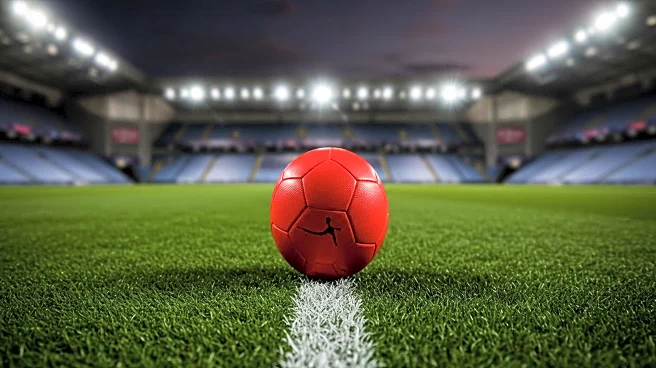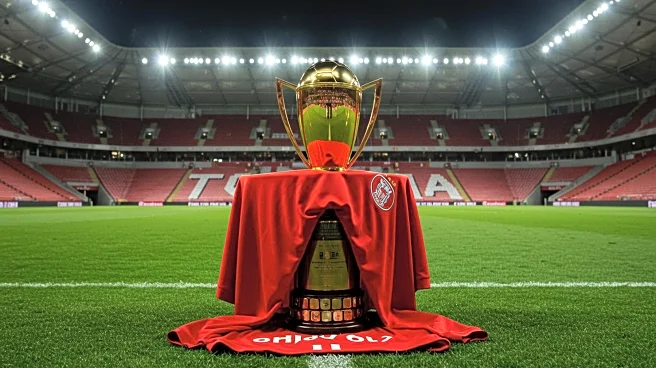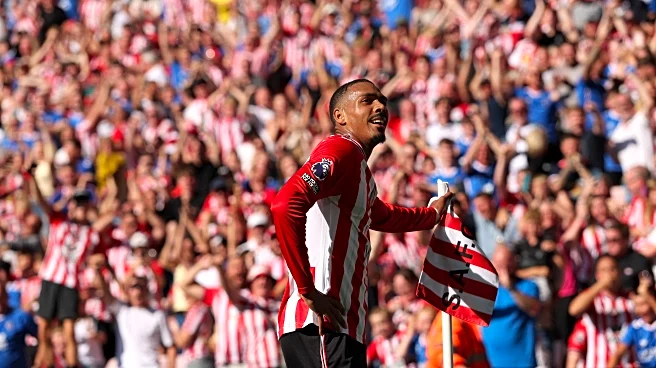Dan Meis received an intriguing prompt 11 years ago.
“I had a young business development guy that said, ‘Hey, if I can give you a meeting with Everton will you go to Liverpool?’” the stadium design expert recalled. “And I said: 'They’re not going to hire a Los Angeles architect.’ I sort of saw them as like the Cubs of the Premier League, historic and provincial.”
Meis, the architect of Seattle’s T-Mobile Park, Philadelphia’s Lincoln Financial Field and Los Angeles’ Crypto.com Arena, listened to Joshua
Boren of his staff and was picked to turn Everton's long-hoped-for stadium into a reality, The Toffees play their first official match in 52,769-capacity Hill Dickinson Stadium on Sunday, their Premier League home opener against Brighton.
“This is going to help us win on the pitch more, because this revenue that we’re going to generate, rather than being seen as a cash grab, The Friedkin Group have committed to recycle that straight back,” Everton CEO Angus Kinnear said of the club's new owner.
Everton had played at Goodison Park since moving from Anfield for the 1892-93 season and its ground was the site of five matches during the 1966 World Cup, including Pelé's only World Cup defeat. Its capacity of 39,414 ranked 10th in the EPL last season, while Hill Dickinson is seventh, trailing Manchester United, Tottenham, West Ham, Liverpool, Arsenal and Manchester City.
There are 5,246 premium seats in the 800 million pound (currently $1.08 billion) stadium, four times the 1,300 at the old venue. It is built on 21.4 acres (8.7 hectares) to Goodison’s 8 (3.25). Fans have 279 wheelchair positions, 58 accessible toilets, 20 gender-neutral toilets, 95 baby-changing facilities and 19 elevators.
A 17,000-capacity fan plaza can host outdoor events, adjacent to the restored Hydraulic Tower and Engine Room dating to 1883, and Everton Way outside the stadium includes 36,000 personalized granite stones with supporters' names, which cost 99 to 750 pounds apiece (currently $134 to $1,012).
"The stadium looks the business. It looks elite,” manager David Moyes said when he returned in January. “So we need to start getting some elite players.”
Everton has nine league titles, the last in 1987, less than half the 20 each of Liverpool and Manchester United, and in 2023 was threatened with relegation until the season's final day. It has long been its city's second-biggest team, Everton's blue outnumbered by Liverpool's red.
“Whilst on a global scale Liverpool is bigger, in the city it feels like an equal split to me," Kinnear said. “When you look at postcode analysis, there’s more Liverpool postcodes in our season ticket base than there are in Liverpool's.”
Players have a circular home locker room with an adjacent hydrotherapy pool. Hill Dickinson has 15 of what the team terms bars, restaurants and experiences along with 274 points of sale and 137 bathrooms. The new ground is 2 miles (3.2 kilometers) from Goodison, which sits across Stanley Park from Anfield and will be used going forward by Everton’s women’s team.
After exploring building in Walton Hall Park and suburban Kirkby, Everton picked the Bramley-Moore Dock along the River Mersey as its preferred site in 2017, and ground was broken in 2021. A dredger made 130 round trips into the Irish Sea to collect nearly 17 million cubic feet (480,000 cubic meters) of sand to fill in the dock area over three months.
Three months after The Friedkin Group bought control of the team from Farhad Moshiri, Everton said this past March it had obtained 350 million pounds (then $451.5 million) in long-term financing for the stadium. The first test match took place the next month involving the Toffees' under-18 team, and in May, Everton announced a naming rights agreement with the Hill Dickinson law firm. The senior team's first appearance was at an Aug. 9 friendly against Roma.
“It’s going to take a bit of us getting used to it completely,” Moyes said. “It’s a step up, certainly, from Goodison.”
UEFA has picked the stadium as a site for the 2028 European Championship.
Meis' flight for the initial pitch meeting was an hour late and his train delayed another hour before he finally saw then-CEO Robert Elstone, who explained the club's unique history.
“All they care about is sort of this cauldron of energy and the experience,” Meis recalled.
Bill Kenwright, Everton's longtime chairman, gave Meis challenging instructions.
"He said: 'I want something that’s both historic and contemporary. It has to look to the future,'” Meis recalled.
Meis made his first of about 30 trips to the site in 2016 and began sketching ideas, even before the final location selection. Brickwork, concrete benches and steel fencing on the site boundary pays homage to Goodison Park’s Archibald Leitch-designed latticework.
“You can see this kind of very traditional brick base that feels like the Titanic or the other buildings around there, but it had this very swoopy kind of space-age looking roof kind of coming out of it and that was the blue wave,” Meis said.
Everton fans supplied their opinions. Lots of them.
“I became sort of Twitter connected to 70,000 collaborators on a daily basis and they were telling me: We need one more seat at least than Anfield," Meis said. “I kept trying to explain to these fans that were so adamant about it, bigger is not necessarily better.”
Seats are raked at 34.99 degrees, close to the legal limit of 35.
"For all of the amenities that modern buildings need, and obviously the owners need the revenue from those other things, the food and beverage offerings, but the fans in English football, they still care most about being right on top of the pitch, as close as they can, as steep as they can be," Meis said.
___
AP soccer: https://apnews.com/hub/soccer












